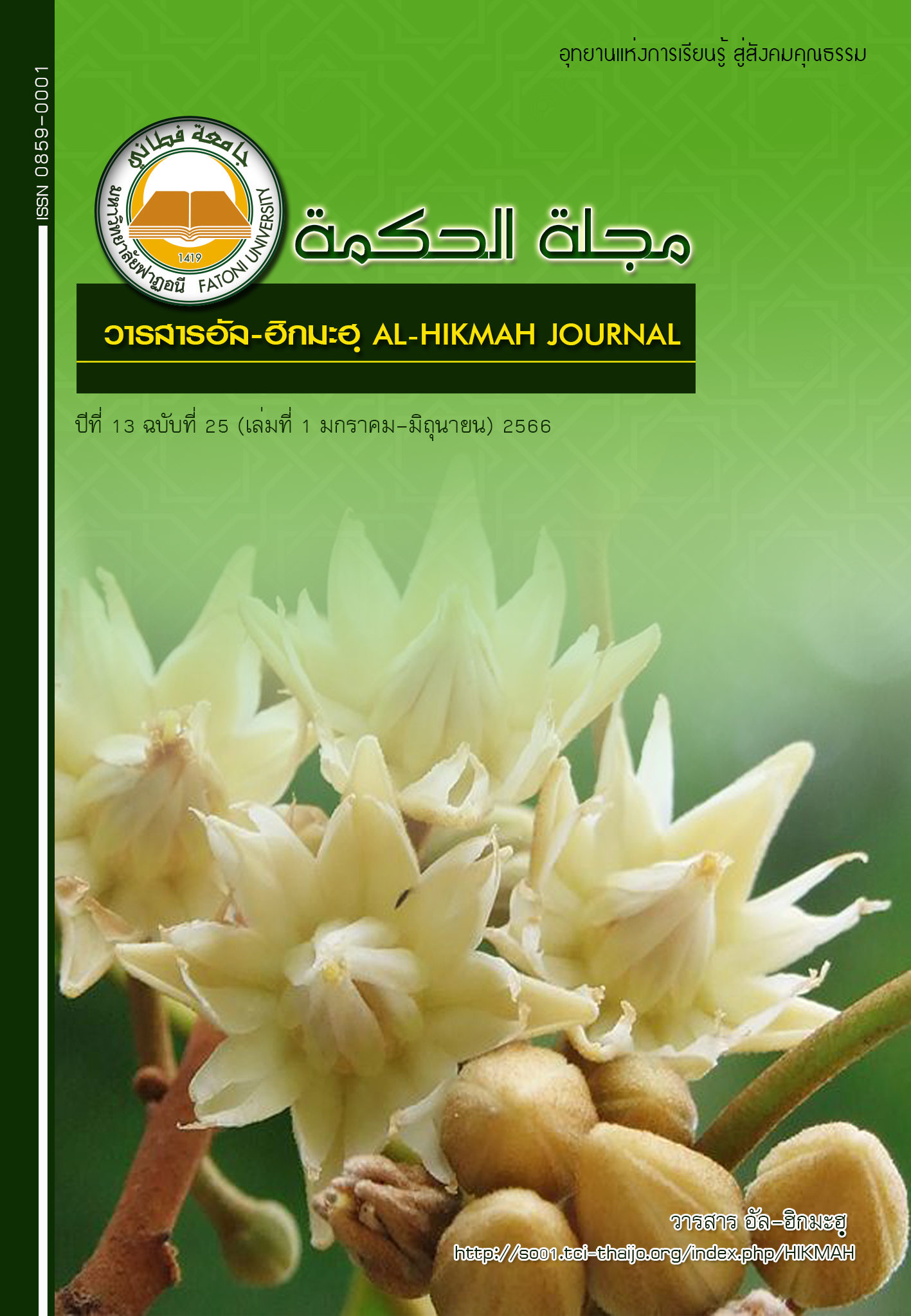Article New Paradigm for Developing Digital Technology Capabilities for Halal Food Community Enterprises in Three Southern Border Provinces' Special Economic Development Zones (Pattani) to Increase Marketing Opportunity to the ASEAN Community
Keywords:
New Paradigm, Digital Technology, Halal FoodAbstract
The research's objectives (1) to examine the body of knowledge and the situation in digital technology (2) to create digital technology innovations; (3) to impart knowledge on the use of digital technology in business for community enterprises in the three southern border provinces' Special Economic Development Zones. It is a qualitative data collection method based on observation, in-depth interview group chat and content analysis. This study was conducted using two groups of Purpose Random Sampling, as follows: 1. Chao Lay Fish Cracker Community Enterprise (Fish Cracker Business Group) 2. Dok Kaew Kue Po Community Enterprises interested in receiving digital technology development training. The study's findings were as follows: (1) Data analysis using SWOT Analysis revealed that the members lacked marketing knowledge. Using a Facebook page for online communication is not a good idea. The product is not yet known. A scarcity of young people who will continue to work in online marketing. Strategy (Marketing Mix: 4Ps - 4Cs) Both groups' products will use fresh ingredients. The price is reasonable given the product's high quality. The distribution channel is the most direct route. There are distributors who sell in front of the factory as well as indirectly. or repeat customers. (2) Both sample groups are prepared and eager to participate in digital marketing training in order to increase sales through the expansion of marketing channels. (3) According to the findings of the training program study, the speakers provided knowledge in online marketing via Facebook, with the speakers and research teams acting as mentors and providing advice all the time via group pages and line groups.
References
กศิพัฎญ์ ทองแกม และ โฆสิต แพงสร้อย.(2562). ปัญหาและแนวทางส่งเสริมการขายสินค้าโอทอปบนตลาดออนไลน์เชิง
พุทธในจังหวัดอุดรธานี. วารสารมหาจุฬานาครทรรศน์ปีที่ 6 ฉบับที่ 9 (พฤศจิกายน 2562).
ชีวัน ทองสอดแสง และคณะ.(2560). บทบาทของการจัดการการปฏิบัติการเชิงรุกที่มีผลกระทบต่อกลยุทธ์การจัดการ บูรณาการ ประสิทธิภาพความร่วมมือทางธุรกิจ ความสามารถการจัดการ นวัตกรรม และความสำ เร็จทางธุรกิจ: กรณีศึกษาอุตสาหกรรมสิ่งทอ. วารสารวิชาการบริหารธุรกิจ สมาคมสถาบันอุดมศึกษาเอกชนแห่งประเทศไทย ในพระราชูปถัมภ์ สมเด็จพระเทพรัตนราชสุดาฯ สยามบรมราชกุมารี ปีที่ 6 ฉบับที่ 1 ประจำ เดือนมกราคม - มิถุนายน 2560.
ธนัท สมณคุปต์ และ พัทธนันท์ บุตรฉุย.(2562). การสื่อสารผ่านสื่อดิจิทัลของวิสาหกิจชุมชน.วารสารเทคโนโลยีและสื่อสารการศึกษา. ECT Journal ฉบับที่16 ประจำเดือน มกราคม ถึง มิถุนายน.
ประสิทธิ์ รัตนพันธ์ และคณะ. (2561). การพัฒนาช่องทางการจัดจำหน่ายและการสร้างมูลค่าเพิ่มให้กับผลิตภัณฑ์ชุมชนประเภทอาหารในจังหวัดสงขลา. วารสารการวิจัยเพื่อพัฒนาชุมชน (มนุษยศาสตร์และสังคมศาสตร์) 2018;11 (4)
ภาสกร รอดแผลง.(2564). การพัฒนาช่องทางการตลาดออนไลน์ของผลิตภัณฑ์งอบ กลุ่มผลิตภัณฑ์จักสานงอบไทยลาวแง้วทองเอน อำเภออินทร์บุรี จังหวัดสิงห์บุรี. วารสารสังคมศาสตร์และมานุษยวิทยาเชิงพุทธ Vol. 6 No. 3 (2564)
วัลลภา วิชะยะวงศ์ และคณะ.(2564). การขยายโอกาสตลาดออนไลน์ผลิตภัณฑ์จากภูมิปัญญากลุ่มชาติพันธุ์ลาวครั่ง สำหรับลูกค้าต่างประเทศ. วารสารสังคมศาสตร์และมานุษยวิทยาเชิงพุทธ ปีที่ 6 ฉบับที่ 7 (กรกฎาคม 2564)
แสงเพ็ชร พระฉาย และคณะ.(2562). การพัฒนาเทคโนโลยีและนวัตกรรมดิจิทัลเพื่อสนับสนุนรูปแบบเทคโนโลยีดิจิทัลสำหรับวิสาหกิจขนาดกลางและขนาดย่อม. 88 ว. วิทย. เทคโน. หัวเฉียวเฉลิมพระเกียรติ.
ปัญจพัฒน์ ประสิทธิ์เดชสกุล.(2562). Research Intelligence. สืบค้นจาก file:///D:/ดิจิทัล/พลิกโฉม ธุรกิจหลังวิกฤตโควิด-19.pdf สืบค้นเมื่อ (15 มีนาคม 2564)
Downloads
Published
How to Cite
Issue
Section
License
Copyright (c) 2023 Al-HIKMAH Journal

This work is licensed under a Creative Commons Attribution-NonCommercial-NoDerivatives 4.0 International License.



